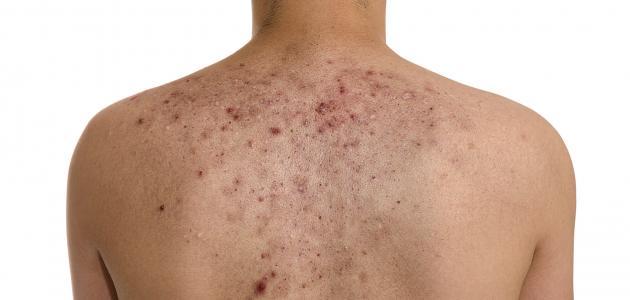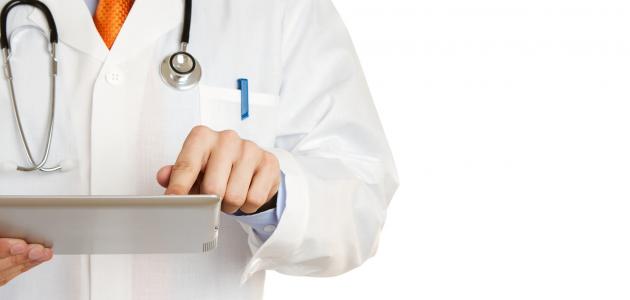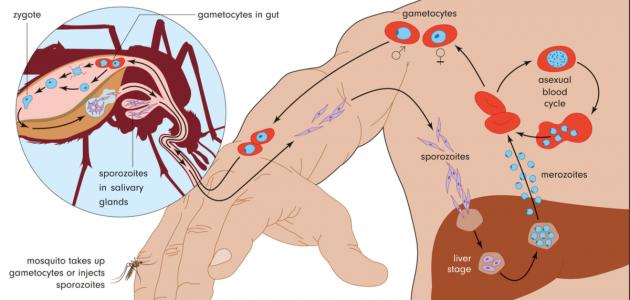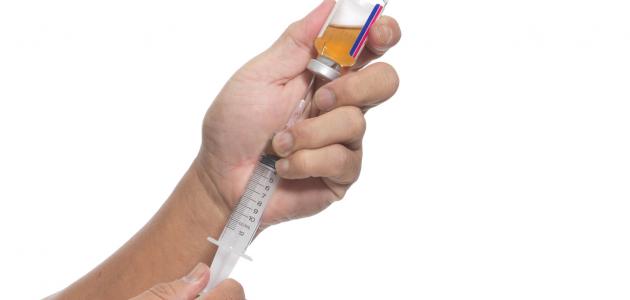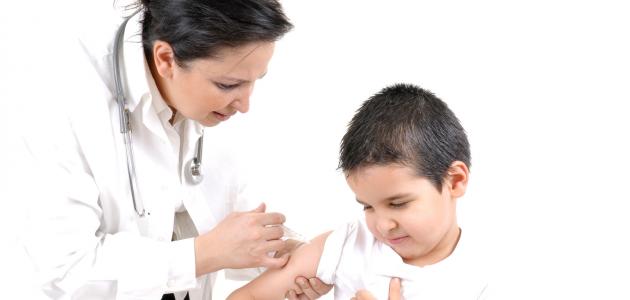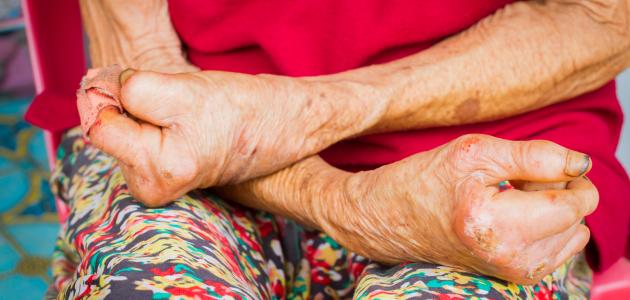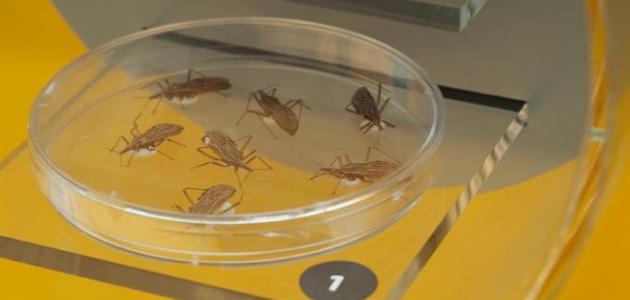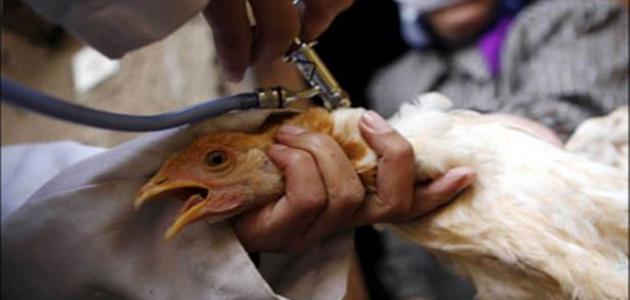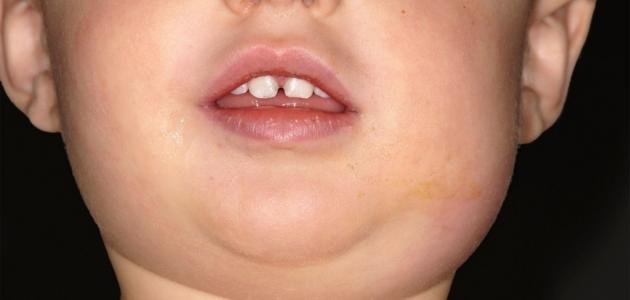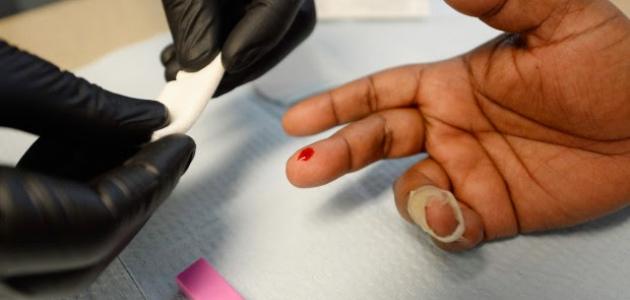Contents
Leprosy
Leprosy, also known as Hansen's disease, is classified as one of the infectious diseases that affect humans as a result of exposure to a type of bacteria known as Mycobacterium leprae, and this type of bacteria is characterized by its slow growth. It should be noted that leprosy mainly affects the skin, the peripheral nerves, and the mucous membranes lining the respiratory system.The upper and the eyes, and it is known that leprosy affects people of all age groups, and in fact the disease was previously considered as one of the highly contagious and devastating diseases, but it is now classified as one of the few diseases that is widespread and can be treated effectively, and it should be noted that if leprosy is not treated, This causes the disease to develop and serious health complications. [1] [2]
Types of leprosy
Leprosy can be classified in three different ways based on the immune system response to the disease, the number of affected skin areas, or the severity of symptoms associated with the disease, and the following is a statement: [3]
- The immune system response to the disease: Accordingly, leprosy is divided into two main types, namely:
- Tuberculoid leprosy, in which the immune system responds well to the disease, and the disease is accompanied by the appearance of some simple skin ulcers, and tubercular leprosy is considered to be mild and slightly contagious.
- Lepromatous leprosy, and the immune system's response is weak in this case, which leads to the spread of the disease to many parts of the body such as the skin and nerves, and the occurrence of a wide spread of skin lesions as well, and the infection rate is high.
- Number of affected skin areas: Accordingly, leprosy is divided into two different parts, as follows:
- Paucibacillary leprosy, in which the number of skin lesions does not exceed five ulcers, with no bacteria appearing when analyzing the skin samples.
- Multibacillary , and leprosy is classified as a multi - bacilli in case the number of skin ulcers more than five ulcers , or in the case of detecting the presence of bacteria in skin samples, or when both together meeting.
- The severity of symptoms associated with the disease: leprosy is divided, depending on the severity of the symptoms, into six different types.
- Intermediate leprosy, known as the presence of a small number of flat sores, which in some cases do not need treatment, and may progress to severe stages.
- Tuberous leprosy, this type of disease is characterized by the presence of a number of flat skin ulcers with a number of large ulcers and numbness in some areas due to the possibility of the disease affecting the nervous system .
- Borderline tuberculoid leprosy, which is characterized by the presence of skin lesions that are smaller than those of tuberculous leprosy, but in a larger number.
- Mid-borderline leprosy, which is characterized by the appearance of red plaques, with moderate numbness and swollen lymph nodes .
- Borderline lepromatous leprosy, which is characterized by the presence of many different skin lesions such as flat sores, swollen lesions, and skin nodules.
- Lepromatous leprosy, which is characterized by the presence of many skin lesions that contain bacteria, and is accompanied by hair loss , weakness in the extremities with the occurrence of deformation.
Methods of transmission of leprosy
Leprosy is transmitted through the arrival of droplets resulting from the patient’s sneezing or coughing, which contains the bacteria that cause the disease, and due to the slow growth and division of the bacteria that cause the disease, the incubation period of leprosy is long and may reach five years, which is the period between transmission Disease and the first appearance of symptoms, and the onset of symptoms may be delayed in some cases to twenty years. [3] [4]
Treating leprosy
The treatment of leprosy depends on the type of disease and the severity of the condition. Among the medicines used in treatment are the following: [3] [5]
- Antibiotics : Antibiotics are used to eliminate the bacteria that cause the disease, and the patient may need to take two or more different types of antibiotics for long periods ranging from six months to a year, and the antibiotics used in the treatment include the following:
- Dapsone.
- Rifampin .
- Clofazimine.
- Minocycline.
- Ofloxacin.
- Anti-inflammatory drugs : and are used to relieve pain and nerve damage associated with the disease, such as aspirin and Prednisone .
- Thalidomide drug: , and it is one of the strong medicines that suppress the immune system, and helps to treat the skin lesions associated with leprosy. It is caused by severe birth defects in the fetus.
Complications of leprosy
Delay in the diagnosis and treatment of leprosy may lead to a number of serious health complications, including the following: [3]
- Abnormalities occur.
- Hair loss , especially eyebrow and eyelash hair.
- Muscle weakness .
- Permanent damage to the nerves of the arms and legs.
- Inability to use hands and feet.
- Chronic congestion in the nose, nosebleeds, and broken septum.
- Iritis.
- Glaucoma in the eye.
- Blindness.
- Erectile dysfunction and infertility .
- Kidney failure.
References
- ↑ "Leprosy elimination" , www.who.int , Retrieved 2-4-2018. Edited.
- ↑ "Hansen's Disease (Leprosy)" , www.cdc.gov , 10-2-2017, Retrieved 2-4-2018. Edited.
- ^ A b t w Maureen Donohue, "Leprosy" , Www.healthline.com , Retrieved 2-4-2018. Edited.
- ↑ "Leprosy" , medlineplus.gov , Retrieved 2-4-2018. Edited.
- ↑ "Leprosy Overview" , www.webmd.com , Retrieved 2-4-2018. Edited.
